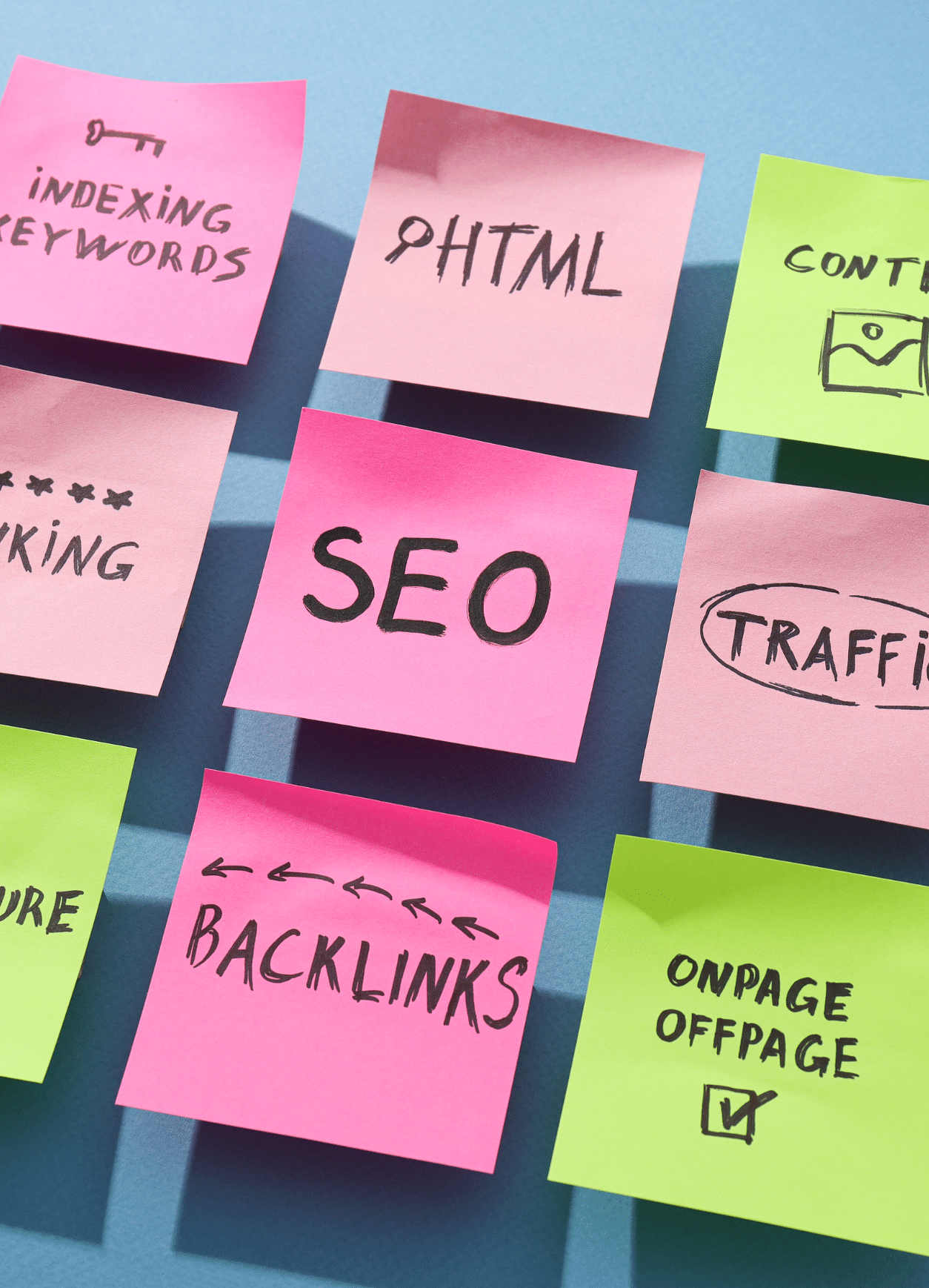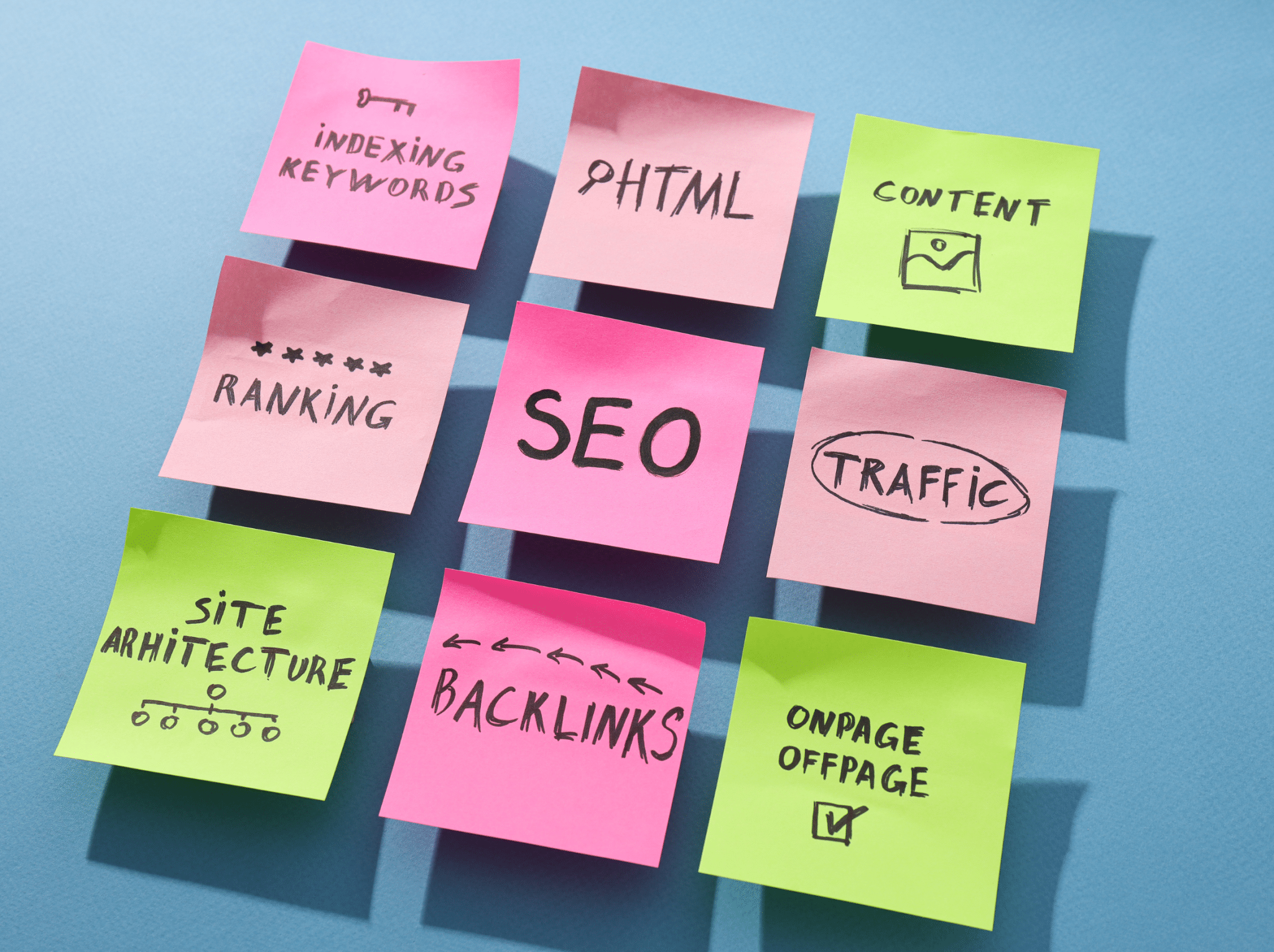Online Marketing Strategies – Kickstart Your Success with Our Guide!

Nowadays, the fastest and most effective way to reach your target audience is through online marketing, because thanks to innovations like tablets and smartphones, life now takes place primarily online.
If you’ve already included online marketing in your marketing plan, you’ve taken the first important step. But then come the key questions:
Which online marketing strategies currently exist?
And which one is right for achieving my business goals?
We answer exactly that in our blog post and shed some light on the topic. You’ll get a clear overview of online marketing and learn all about the different types of online marketing strategies.
So, are you ready to become an online marketing rockstar? Let’s go
What Exactly Is Online Marketing?
Let’s start with a quick definition so we know exactly what we’re talking about! As we all learned at some point, marketing in general refers to all campaigns and activities aimed at generating sales, revenue, and leads.
In traditional marketing, this includes field sales representatives, print ads, as well as radio and television advertising.
Online marketing, on the other hand, encompasses all activities that take place on the internet — such as brand building, search engine marketing, and email, affiliate, social, video, and content marketing.
Today, online marketing represents a major part of a company’s overall marketing efforts and is increasingly replacing traditional methods.
Contact

What Makes Online Marketing Successful?
To be successful in online marketing, there are a few essential tasks you need to tackle first. Above all, you must set clear goals. Look both inward and at your business to determine what you want to achieve — whether it’s brand awareness, lead generation, sales, or customer retention.
In general, it’s recommended to define your goals according to the SMART principle — specific, measurable, achievable, relevant, and time-bound.
Next, to choose the right online marketing measures, you need to understand who your target audience is. The best way to do this is by creating buyer personas and analyzing your audience’s needs, problems, and behavior using data from Google Analytics or surveys.
Even before choosing specific strategies, you need to take care of your basic online presence — because without it, nothing works! Start with a professional website and consistent brand communication across all channels.
For your online presence and strategies to truly succeed, you must be authentic and build trust. The internet never forgets! So communicate transparently with your customers, engage with their reviews, and connect with them on a personal level.
Why Is Online Marketing Important?
You might be thinking: I don’t quite get the question.
But it’s worth reminding yourself (especially before your next meeting with your team or management!) just how essential online marketing really is. It offers advantages that traditional marketing can barely — or, to be more precise, cannot accurately — achieve.
First and foremost, it’s about reach: with online marketing, you can reach up to 67 million internet users every day — cost-effectively and with precise targeting. This alone gives your brand greater visibility, especially in combination with SEO and SEA. After all, we know that 4 out of 5 consumers search for information about products or services online first.
Thanks to the features of online marketing, you can also achieve perfect audience targeting. Modern targeting techniques increase the efficiency of your customer acquisition and retention. This means you can precisely define different target audiences on search engines and social media — and deliver highly relevant content every time.
And the best part? Your audience interacts with you — providing feedback through their behavior, both verbal and technical. For example, you can measure how long visitors stay on your website or how they engage with a post or banner. These data points can be analyzed and used for further optimization.
This allows you to measure your success accurately — with tracking tools that provide real-time metrics for your online campaigns. Through this precise performance measurement, you can also manage your online marketing budget more efficiently: knowing, for instance, how much a conversion costs enables you to adjust your ad spend accordingly.
And speaking of budgets — with online marketing, you’ll definitely get more for your money than with traditional marketing. For comparison: running a Facebook ad costs roughly €3.50 CPM, whereas a 30-second TV commercial can cost around €20 CPM.
Who Uses Online Marketing?
We could answer this question in the shortest possible way: Who doesn’t use online marketing nowadays? Because by now, almost everyone does.
Today, online marketing is used by nearly all types of organizations — companies (both B2C and B2B), self-employed professionals and freelancers, e-commerce businesses and online shops, artists, public institutions, NGOs, and even educational providers. They’ve all integrated online marketing into their mix to reach their target audiences effectively and in the right place.
So, there’s only one conclusion: you too should definitely be using online marketing if you don’t want to lose your competitive edge.
What Is an Online Marketing Strategy?
A digital marketing strategy or online marketing strategy can be defined as an action plan that outlines how one or more online marketing channels are used to reach a specific target audience. These strategies include a series of steps designed to achieve particular online marketing goals.
With your strategy, you determine which digital channels, content, and tactics you will use in your plan.
Never forget that your online marketing strategy is extremely important — after all, you don’t want to engage in aimless activity or uncoordinated efforts that ultimately lead to no results.
What Does an Online Marketing Strategy Include?
So, enough talk about how important online marketing is — and especially how crucial having a strategy can be. Let’s get specific and look at the fundamentals! Grab a pen and paper (or your tablet), because we’re about to discuss what your online marketing strategy should include.
To help you achieve the best possible results, we’ve put together a short guide for you. The following points should be key components of your online marketing strategy:
Point 1: Goals
We never get tired of mentioning them — for a simple reason: your goals are the most important part of your strategy. Look at your company’s annual plan and define your objectives so you can prepare your campaigns perfectly.
Point 2: Target Audience Analysis
Yes, we want to talk about this once again. Online marketing gives you a wide range of tools to help you reach your target audience effectively and avoid old problems like wasted reach. That’s why we repeat our mantra: get to know your target audience as well as your closest, long-time friends. Only then can you deliver your campaigns on the right channels and at the right time.
Point 3: Competitor Analysis
Just like in a traditional marketing strategy, you need to know who you’re up against in the online market. Check your competitors’ websites, social media channels, and ads, and carry out a classic SWOT analysis to identify their strengths, weaknesses, opportunities, and threats. This is the only way to determine your unique differentiators and use them to your advantage to stand out from the competition.
Point 4: Channel Strategy
When it comes to online marketing reach, it’s all about location, location, location. Define a channel strategy and determine which channels best match your target audience and your goals. You can choose between using your website as the central hub, SEO & SEA to improve your search engine ranking (including with Google Ads), social media, email marketing, content marketing, and influencer marketing.
Point 5: Content Strategy
Once you’ve defined your channels, it’s time to think about your content strategy and determine which topics and formats you want to use. It helps to plan this content in an editorial calendar for publication. Whether it’s a blog, video, whitepaper, social post, or newsletter, always pay attention to your tone of voice and make sure your brand message comes across clearly.
Point 6: Key Performance Indicators
Next, you should define how you’ll measure success using Key Performance Indicators (KPIs). These KPIs can include website traffic, conversion rate, click-through rate (CTR), or Return on Ad Spend (ROAS). Useful tools for this include Google Analytics, the Meta Business Suite, your CRM system, and SEO tools such as SEMrush.Customization and Design in Webflow
Point 7: Planning Budget and Resources
Once everything else is in place, be sure to define the to-dos within your team. Ask yourself which tasks can be handled internally and where you may want — or need — to bring in external service providers. Once that’s clear, you should allocate your budget across channels and campaigns.
Point 8: Optimization and Further Development
Once you’ve launched your online marketing strategy, don’t sit back and relax — this “baby” never sleeps! Regularly check your campaigns, analyze the results, and continuously adjust your strategies as needed. It’s essential to keep an eye on trends and market changes to stay ahead.
What Goals Does Online Marketing Pursue?
Let’s talk about goals once again! You now know you have to define them — otherwise, none of this will work. Every company sets its online marketing goals individually, but there are some fundamental objectives that accompany every strategy. Here’s a summary of the most important ones:
Increasing Brand Awareness
Let’s be honest — who doesn’t want to achieve this through their marketing activities? To boost your brand awareness, it’s essential to first make people aware of your brand at all. This means you need to build, position, and develop a strong brand identity — all aspects that depend on identifying your unique selling propositions (USPs) in your competitor analysis.
In general, brand awareness describes how many people know or recognize your brand — it’s about staying present in your target audience’s minds. When increasing brand awareness, there’s always a long-term goal that goes hand in hand: building trust with your customers.
Trust has a major influence on purchasing decisions — customers are far more likely to buy from brands they already know. This significantly increases both click and purchase rates and forms the foundation for successful lead generation and sales marketing.
Better Customer Retention
Your ads and search engine optimization have worked — your brand is known. Now let’s move on to the next goal: better customer retention.
Once you’ve successfully built a relationship between your customers and your brand, the likelihood that they’ll purchase more frequently than new customers increases significantly — because they’re already convinced by your brand.
In other words: the effort and costs required to strengthen customer loyalty are much lower than those needed to acquire new customers. Another key factor is that loyal customers tend to have lower price sensitivity. Even if your competitors offer lower prices, your customers’ trust in your brand often outweighs the difference — they stay with you.
This also creates greater cross-selling and upselling potential among existing customers.
So, the goal of improved customer retention is to encourage your customers to interact repeatedly with your brand, buy again, and recommend you to others instead of switching to competitors.
Ultimately, stronger customer retention leads to more revenue per customer, loyalty, trust, and a higher customer lifetime value (CLV).
Direct Traffic
Direct traffic occurs when users type your website’s URL directly into their browser to access your online presence — without going through search engines or links from other landing pages.
Organic Traffic
You generate organic traffic through strong rankings in major search engines. This means users come across your offering while researching online and want to learn more about it.
Email Traffic
When users visit your website by clicking links in newsletters, this is referred to as email traffic.
Traffic from Paid Ads
This is the core outcome of the pay-per-click marketing model: you run paid ads – such as Google Ads – that are strategically placed at the top of search results. Potential customers then click on these ads and land directly on your website. Traffic from paid advertising not only increases your website visits but also allows for precise performance tracking of your SEA campaigns.
Referral Traffic
Your digital marketing strategy expands even further when your brand or business is linked on external websites. When users click those links, they generate referral traffic to your online presence – increasing your reach and authority.
New Customer Acquisition
The success of your online marketing efforts is also measured by how many new customers you gain. If you’ve reached more people and successfully motivated them to purchase your product for the first time or sign up for a newsletter or consultation, you’ve succeeded.
This strategy focuses on individuals who previously had no contact with your brand, aiming to convert them from leads into long-term buyers. In marketing funnel terms, this covers the stages of Awareness → Consideration → Conversion – a process essential for growing your business and unlocking new target audiences and markets.
What Types of Online Marketing Are There?
The email marketing strategy is historically defined as the first form of online marketing, emerging in the early 1990s. Since then, a lot has changed — through inspiration, expertise, and the evolution of media, a colorful variety of different strategies has developed, each addressing specific goals, target groups, and channels.
All established online marketing strategies can often be combined to create an efficient and effective mix. As promised, we’ve put together a short guide with best practices for you. Don’t worry — it’s worth the read!
Content Marketing Strategy
With a content marketing strategy, you create and distribute targeted, relevant, useful, and engaging content to reach your target audience and build trust. In this sense, content marketing doesn’t sell directly — it informs, inspires, and entertains.
In short: it aims to provide real added value to customers, so they naturally discover your brand, generating leads and positively influencing their purchase decisions.
You can implement this approach through formats such as blog articles, videos, social media, e-books, podcasts, newsletters, or tutorials.
Search Engine Marketing (SEM)
Search Engine Marketing (SEM) is an essential part of online marketing. It includes all measures that help companies become visible on popular search engines such as Google and Bing.
SEM consists of two key areas: Search Engine Optimization (SEO) and Search Engine Advertising (SEA).
-
SEO refers to search engine optimization aimed at improving your unpaid, organic ranking in search results.
-
SEA supports SEO through paid search advertising, placing paid ads such as Google Ads above or below the organic search results.
With successful search engine marketing, you can increase website traffic, sales, and brand awareness, attract new customers, and strengthen your local visibility
Social Media Marketing
With a social media marketing strategy, social platforms become your playing field. You use channels such as Instagram, Facebook, TikTok, LinkedIn, or YouTube to reach your target audience directly and increase brand awareness.
The social media marketing strategy offers numerous advantages: you can communicate directly with customers and leads, distribute your content efficiently, build your brand identity and community, run highly targeted advertising campaigns with wide reach, and continuously optimize your campaigns thanks to measurability and real-time feedback.
Influencer Marketing
As soon as you open Instagram or TikTok, you encounter them — the influencers! While they are sometimes viewed with a degree of skepticism, their role should not be underestimated.
As individuals with strong reach and influence over specific audiences, influencers are considered trustworthy, credible, and opinion-shaping within their communities.
Therefore, it’s worth evaluating whether implementing an influencer marketing strategy makes sense for your business. The impact of influencer collaborations can significantly increase your brand awareness and sales, build trust in your company, and ensure your message reaches your target audience effectively.
Viral Marketing
Do you enjoy capturing attention and want to channel that energy into your online marketing strategies? Then viral marketing is just right for you.
By designing your content in a creative way that encourages rapid and organic sharing across social networks or via email, you engage in effective viral marketing — without needing to spend excessive advertising budgets!
When done successfully, viral marketing campaigns can deliver impressive results: rapid brand awareness, high reach, emotional connection with your brand, increased media and public attention, and stimulating conversations — all of this can be achieved through strong viral marketing.
Affiliate Marketing
Why not consider involving external partners in your online marketing strategy? That’s exactly the idea behind affiliate marketing.
In this model, companies collaborate with so-called affiliates to promote products or services. Once a purchase is made through the affiliate’s referral link, the affiliate receives a commission. Typically, this recommendation is shared via a unique tracking link that you provide, which the affiliate then places on their blog, YouTube channel, or website.
The advantage is clear: you only pay affiliates when a conversion actually happens. In return, your products gain access to additional channels and audiences — because unlike influencer marketing, affiliate marketing extends far beyond social media.
Thanks to link tracking, you can directly measure the success of your affiliate campaigns and benefit from the added credibility of authentic recommendations.
E-Mail Marketing
You might remember — the original pioneer of all digital marketing strategies is e-mail marketing!
In this form of direct marketing, companies send targeted promotional and informational emails to prospects and customers, using these messages to communicate regularly and personally with their audience.
Through newsletters, welcome emails, product updates, transactional messages, and automated campaigns, the goal of e-mail marketing is to strengthen customer relationships, increase sales, enhance brand awareness, nurture leads, and encourage customer retention.
Display Marketing
“All eyes on visual ads” — that’s the motto of display marketing.
In this strategy, banners, images, pop-ups, animations, or videos are designed and placed on websites, apps, or platforms. In short, display marketing is visual online advertising on external websites.
These ads are typically displayed on websites and blogs within the Google Display Network, in apps or games, YouTube videos, and news portals. Display campaigns also appear on social media platforms as sponsored posts or banners.
Newsletter Marketing
You can send newsletters as part of your e-mail marketing strategy — or treat them as a standalone approach within your overall online marketing plan.
Whether informative or promotional, the newsletter marketing strategy focuses on keeping customers regularly updated.
In compliance with GDPR regulations, all subscribers have opted in twice, ensuring that your newsletters reach both existing and potential customers — strengthening loyalty and boosting sales.
Mobile Marketing
The world lives online, and most people now browse the internet primarily via their smartphones. This is where mobile marketing comes in.
With mobile marketing, you use campaigns designed specifically for mobile devices such as smartphones and tablets, employing content, advertising, and interactions optimized for mobile use.
Examples include apps, SMS, push notifications, mobile websites, or social media. Thanks to precise audience targeting, you can expand your reach, react quickly to offers and promotions, and communicate directly with your customers via push messages, SMS, or messenger apps.

Conclusion
Online marketing offers countless opportunities to design a creative and, above all, efficient marketing mix.
You should definitely be active in online marketing to stay up to date and to position your brand and company successfully and sustainably in the market while generating long-term growth and revenue.
Bring your marketing team together, define your goals, and choose the right online marketing strategies.
If you need support with website optimization, SEO/SEA campaign planning, or graphic support for your campaigns, feel free to contact us. Our web developers, marketing team, and art direction are here to help.
FAQ
What is the best marketing strategy?
It’s not possible to give a one-size-fits-all answer to which online marketing strategy is the best, as it strongly depends on your company, product, target audience, marketing goals, and the market environment.
However, there are certain key actions that are important for every marketing strategy. It all begins with target group analysis — you should understand your customers deeply and know everything about them, such as their needs and where exactly they can be found.
In addition, you should continuously and consistently communicate your unique selling propositions (USPs) to convince your customers and leads of your products and services.
Your online marketing strategy should also follow a multichannel approach, combining channels such as social media, newsletters, SEO, and content marketing to engage your customers wherever they are.
When it comes to content marketing campaigns, you should focus especially on creating relevant and valuable content, as this helps build trust and strengthen your brand. Within this framework, you can also use storytelling — presenting your brand through emotions and compelling stories.
No matter which online marketing strategy you choose, it’s crucial to leverage your digital marketing data: make decisions based on analytics, measure your campaigns, test different variations, and continuously optimize your results.
Is online marketing in demand?
Online marketing is extremely in demand today and is steadily replacing traditional marketing campaigns. The reasons are clear: a strong digital presence is essential, as customers today primarily search for products and services online. The broad reach that can be achieved through online marketing strategies — across social media, search engines, and many other platforms — makes it highly attractive for businesses.
Combined with precise targeting, online marketing enables companies to reach their audiences with great accuracy, achieving one of the key objectives that most organizations pursue.
Another major advantage is cost and performance tracking — success can be measured precisely, allowing marketing teams to allocate budgets efficiently.
When it comes to trends and innovation, online marketing is always at the forefront, constantly evolving with new technologies such as AI, influencer marketing, and video content.
How much does online marketing cost?
The cost of online marketing cannot be defined universally, as it varies greatly depending on your goals, strategy, industry, and campaign scope.
Your budget primarily depends on the type of campaign — social media ads, Google Ads, SEO, and email marketing all have different cost structures.
Your target audience and competition also play an important role, especially for paid ads. The more competitive the industry, the higher the cost-per-click (CPC) tends to be on Google Ads or Meta Ads.
If you choose to work with an external online marketing agency, you should expect monthly retainer fees or project-based pricing. Companies should also plan for costs related to tools, website optimization, consulting, and employee training.
Is online marketing a career?
A quick look at the crowds at Hamburg’s annual Online Marketing Rockstars Festival makes it clear: online marketing is, of course, a profession — and one that’s more in demand than ever.
The field offers numerous career opportunities, ranging from traditional online marketing manager roles to content marketing, social media management, affiliate management, and SEO specialization.
Careers in online marketing are becoming increasingly popular because they combine creativity, technology, and analytics. You’re constantly working with new trends, and there are many opportunities for professional development and specialization.
Dive into our World
Here is where we inform you about exciting digital trends and explain how you can use them in your business. In addition, we offer you a closer look at our work as a digital agency. Thank you for your interest. Thank you for your interest.
Drupal Themes – everything you need to know about them!
14. November 2025
Discover Drupal — the powerful open-source CMS trusted by the White House. Learn how its flexible themes help you design and customize your website with ...
Read More
Installing WordPress — here’s how!
28. October 2025
Learn how to install WordPress in just a few minutes — from setup to going live. A quick, beginner-friendly guide to getting your website online ...
Read More
Pimcore Installation – A Step-by-Step Guide
24. October 2025
Chosen Pimcore for your website or online shop? Excellent choice — the Ferrari of CMS platforms. Here’s how to install it step by step.
Read More
We call you!
Are you planning a new digital project and you have questions about our services? Complete this form or call us at +1 888 9263234














